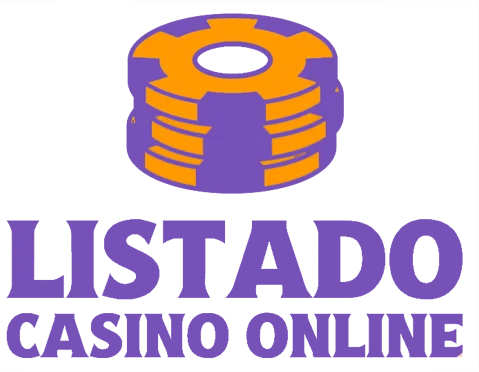Under 7.5 Goals Predicciones de ice-hockey tomorrow (2025-11-05)
Introducción al Hockey sobre Hielo U7.5: Predicciones para Mañana
El hockey sobre hielo es un deporte emocionante y lleno de acción, especialmente en la categoría U7.5 donde los goles son limitados a menos de siete y medio por partido. Esta restricción agrega una capa extra de estrategia y emoción, ya que cada gol cuenta aún más. En este artículo, exploraremos los partidos programados para mañana, ofreciendo análisis detallados y predicciones expertas para las apuestas.
Under 7.5 Goals predictions for 2025-11-05
No ice-hockey matches found matching your criteria.
Partidos Destacados del Día
Mañana se disputarán varios partidos emocionantes en la categoría U7.5. Aquí te presentamos los enfrentamientos más esperados y nuestras predicciones basadas en el desempeño reciente de los equipos.
Equipo A vs Equipo B
Este encuentro promete ser uno de los más emocionantes del día. El Equipo A ha mostrado una sólida defensa en sus últimos partidos, mientras que el Equipo B ha demostrado ser peligroso en ataque. Nuestra predicción es que el partido terminará con un marcador bajo, posiblemente 3-2 a favor del Equipo A.
Equipo C vs Equipo D
El Equipo C viene de una racha impresionante, ganando sus últimos cinco partidos con un promedio de menos de cinco goles por partido. El Equipo D, aunque no tan fuerte en defensa, ha mejorado significativamente en su ataque. Predicción: 4-3 para el Equipo C.
Equipo E vs Equipo F
Este es un partido entre dos equipos que se conocen muy bien. El Equipo E tiene una sólida defensa, mientras que el Equipo F es conocido por su habilidad para aprovechar cualquier oportunidad. Nuestra apuesta está en un empate con un marcador de 2-2.
Análisis Táctico
En la categoría U7.5, la táctica juega un papel crucial debido a la limitación de goles. Los equipos deben equilibrar entre una defensa sólida y un ataque efectivo. Aquí analizamos algunas estrategias clave que podrían influir en los resultados de los partidos de mañana.
Defensa Sólida
- Portero como Pilar: En esta categoría, el portero es fundamental. Un buen portero puede cambiar el rumbo del partido con paradas cruciales.
- Juego Defensivo Coordinado: La coordinación entre los defensores es esencial para cerrar espacios y evitar goles.
Ataque Efectivo
- Juego Rápido: Los equipos que pueden mover el puck rápidamente tienen más oportunidades de crear situaciones de gol.
- Jugadas Estudiadas: Las jugadas preestablecidas pueden romper defensas bien organizadas.
Estrategias Mixtas
- Cambio de Ritmo: Alternar entre juego lento y rápido puede desorientar a la defensa rival.
- Foco en el Centro del Puck: Controlar el centro del hielo permite más opciones de pase y tiro.
Predicciones Detalladas para Apuestas
A continuación, ofrecemos nuestras predicciones detalladas para las apuestas en los partidos de mañana. Estas predicciones se basan en el análisis del rendimiento reciente, las tácticas probables y otros factores relevantes.
Equipo A vs Equipo B
- Predicción Principal: Victoria del Equipo A con un marcador de 3-2.
- Otra Opción: Menos de 6 goles totales (Under).
- Razones: El Equipo A ha mantenido su portería a cero en tres de sus últimos cuatro partidos.
Equipo C vs Equipo D
- Predicción Principal: Victoria del Equipo C con un marcador de 4-3.
- Otra Opción: Más de 7 goles totales (Over).
- Razones: El Equipo D ha estado marcando al menos dos goles por partido recientemente.
Equipo E vs Equipo F
- Predicción Principal: Empate con un marcador de 2-2.
- Otra Opción: Exactamente dos goles totales (Exacta).
- Razones: Ambos equipos han tenido problemas para anotar más de dos goles en sus últimos encuentros.
Otros Partidos Destacados
- Predicción General: En general, esperamos ver varios partidos cerrados con resultados ajustados debido a la naturaleza táctica del hockey U7.5.
- Tendencias Recientes: Los equipos que han mejorado su defensa tienden a tener un mejor rendimiento en esta categoría.
- Favoritos Ocultos: Presta atención a los equipos menos conocidos que han estado trabajando duro en su entrenamiento táctico; podrían sorprendernos con resultados inesperados.
Tips Adicionales para Apostadores
Más allá de las predicciones específicas, aquí te ofrecemos algunos consejos generales para mejorar tus apuestas en hockey sobre hielo U7.5.
Focalización en Estadísticas Clave
- Efectividad del Portero: Revisa las estadísticas recientes del portero principal de cada equipo.
- Tasa de Goles Concedidos: Un equipo que concede pocos goles es una buena opción para apostar por un resultado bajo (Under).

